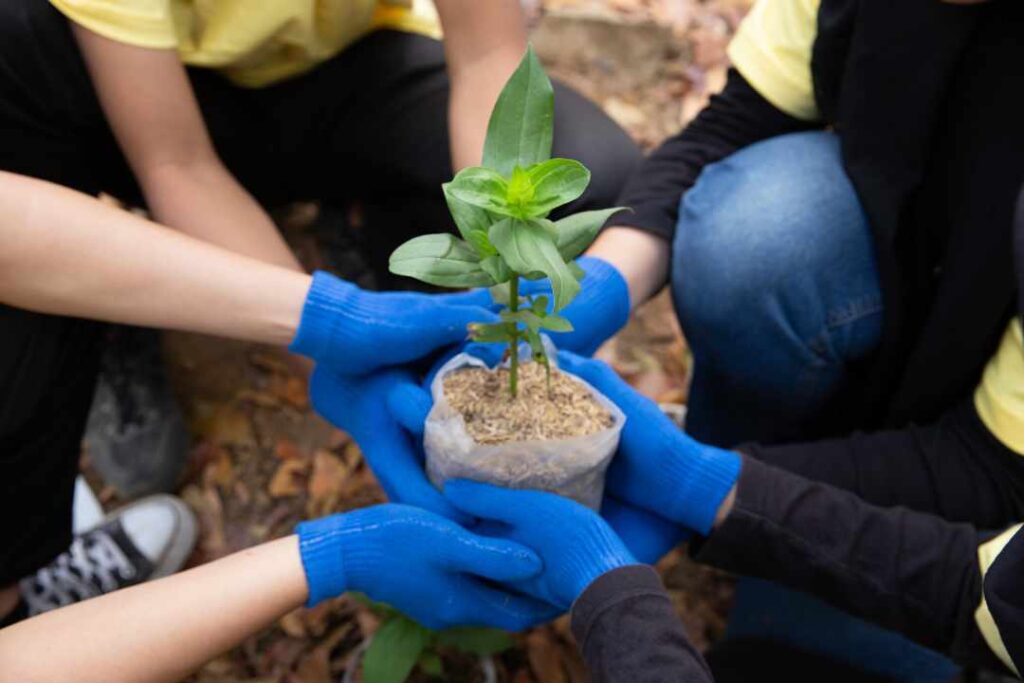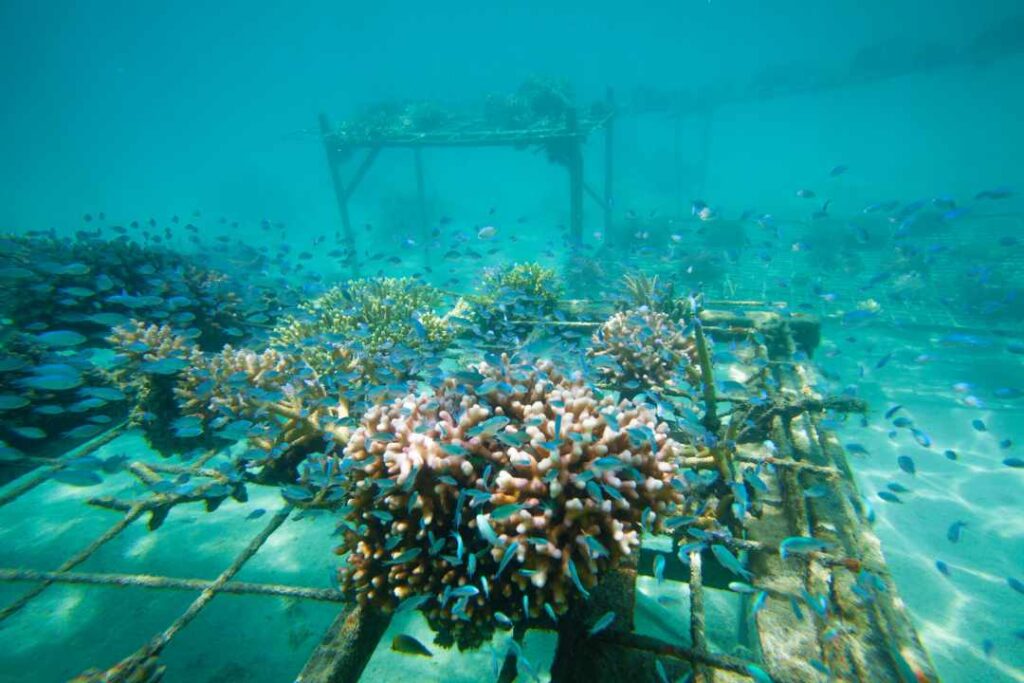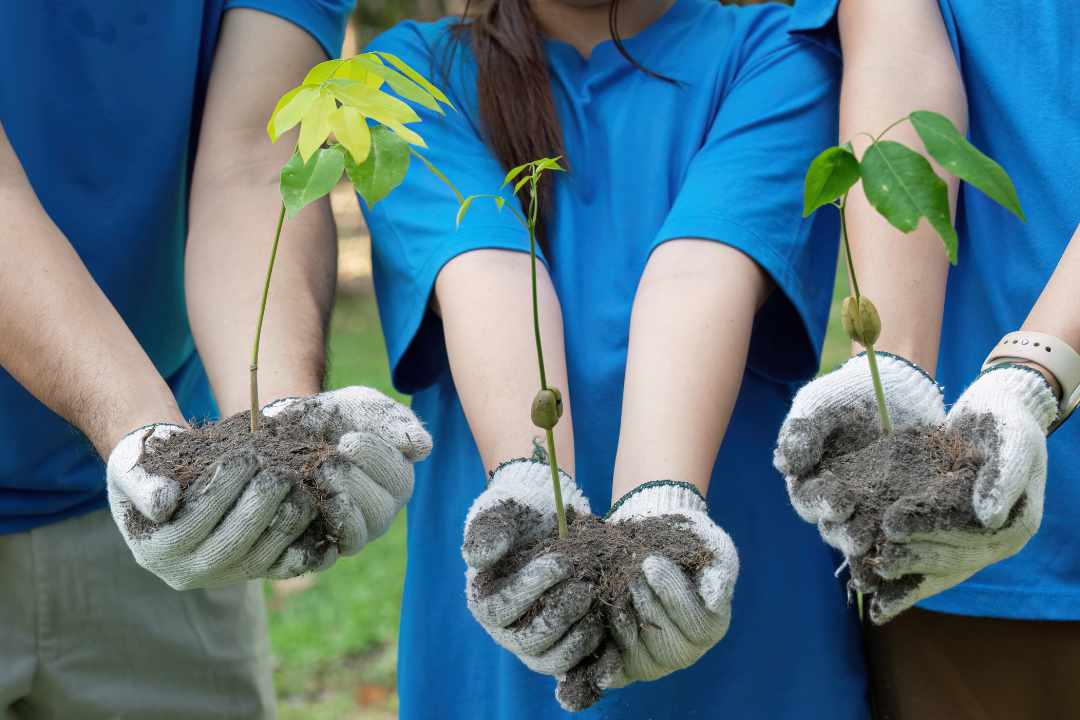Bali tree planting programs are becoming a strong pillar of Corporate Social Responsibility (CSR) initiatives in the island’s tourism and business sectors. These programs go beyond symbolic acts of planting greenery. They reflect a commitment to restore damaged ecosystems, improve local livelihoods, and keep Bali’s natural charm alive for future generations. As sustainable tourism in Bali grows, CSR environmental programs play a vital role in connecting businesses, communities, and nature in a way that benefits everyone.
CSR Environmental Programs: More Than Just Goodwill
Corporate Social Responsibility is no longer just a voluntary action to boost a company’s image. For many businesses in Bali, it has become a long-term strategy to sustain both the environment and their operations. A well-designed CSR environmental program allows companies to engage with local stakeholders, including residents, farmers, and visitors.
Tree planting is one of the most impactful approaches. The process is simple, yet the results are lasting. It helps combat the effects of degraded land, improves air quality, and provides shade and habitats for wildlife. At the same time, planting the right species of trees can bring direct and indirect economic value to local people.

Sustainable Tourism Bali and the Role of Tree Planting
Sustainable tourism in Bali depends on preserving its landscapes, biodiversity, and cultural heritage. Without healthy forests, fertile soil, and clean water, the island’s appeal as a travel destination would decline. CSR tree planting projects address these needs by combining ecological restoration with tourism benefits.
When tourists see a business contributing to nature protection, they feel more connected to the destination. Many companies now design their CSR tree planting activities to also be educational experiences, inviting guests to join planting days and learn about local ecosystems. This strengthens the link between visitors and the communities they visit, while promoting responsible travel behavior.
From Mangroves to Majegau: Diverse Planting Efforts
CSR environmental programs in Bali are not limited to planting a single type of tree. Instead, they focus on species that suit the location’s natural conditions and the community’s needs.
Mangrove Tree Planting
Mangroves are known as powerful natural carbon sinks. They protect coastlines from erosion, create breeding grounds for fish, and improve water quality by filtering pollutants. In Bali, many CSR programs target mangrove restoration in areas like Teluk Benoa.
Damage to mangrove forests often results from land conversion, pollution, and unsustainable farming practices. By replanting mangroves, companies help restore these ecosystems. The benefits go beyond ecology. Mangroves stabilize beaches, trap sediment, absorb wave energy, and shield coastal communities from storms. This is a direct investment in the resilience of Bali’s coastline.
Multi-Purpose Tree Species (MPTS) for Local Villages
In the Denbukit highlands, CSR projects often plant multi-purpose tree species such as durian, coffee, avocado, pomelo, and the Balinese hardwood majegau. These trees not only restore degraded land but also generate income for rural households once they mature.
Villages like Selat, Wanagiri, Ambengan, Panji, Panji Anom, and Sambangan have all been involved in such initiatives. By combining ecological goals with economic returns, the programs ensure that the community has a reason to continue protecting the trees long after the planting day ends.
Fruit and Native Tree Planting
Beyond mangroves and MPTS, CSR projects plant various fruit trees and native species across Bali. These trees support biodiversity, provide food for people and wildlife, and contribute to the island’s green cover. Areas around Buleleng, the pine forests, and rural villages have benefited from such efforts.
The choice of species often reflects the cultural identity of Bali, ensuring that reforestation also protects traditional landscapes. Planting native trees like majegau also supports local craftsmanship, as the wood is valued for ceremonial and artisanal purposes.
Community Involvement: The Heart of CSR Success
The most effective CSR tree planting programs actively involve the local community. This ensures that the planted trees are cared for and integrated into the area’s long-term plans. Moreover, many companies partner with farmer groups or village organizations to manage the planting sites.
Community members often take part in selecting the species, preparing the land, and maintaining the young trees. This creates a sense of ownership and pride. It also strengthens relationships between businesses and residents, turning CSR activities into shared achievements.
Well-Planned Implementation for Lasting Impact
A successful CSR environmental program is never random. It begins with careful planning. Companies first select planting locations based on environmental needs and local input. They then decide on the species, number of trees, and format of the planting event.
Logistics are arranged in advance, including seedling procurement, field accommodation, transportation, and event documentation. Many companies also organize additional activities, such as educational talks, cultural performances, or site visits, to make the planting day more engaging.
By treating tree planting as both a restoration effort and a well-executed event, businesses can achieve their environmental targets while also creating memorable experiences for participants.

Beyond Trees: Coral Planting and Marine Restoration
Some CSR environmental programs in Bali extend their efforts to the ocean. Coral planting, for example, helps restore damaged reefs. These marine ecosystems are essential for biodiversity, fisheries, and coastal protection.
Just like trees on land, corals provide long-term benefits when cared for properly. Combining terrestrial reforestation with marine restoration ensures that Bali’s land and sea environments remain healthy and productive.
Long-Term Benefits for Nature and People
The ecological benefits of tree planting are clear—carbon absorption, soil stabilization, improved water quality, and habitat creation. But the social and economic impacts are just as important.
When communities gain income from sustainable tree products or ecotourism opportunities, they have a strong incentive to continue protecting the environment. Businesses also benefit by building a reputation for responsibility and care, which can attract eco-conscious customers and partners.
Conclusion: Planting the Future of Bali
CSR environmental programs that focus on Bali tree planting are more than just symbolic gestures. They are investments in the island’s future—its landscapes, communities, and economy. By restoring forests, protecting coastlines, and supporting livelihoods, these initiatives create a stronger, greener Bali.
In the long run, sustainable tourism in Bali will depend on the actions taken today. With businesses, communities, and visitors working together, tree planting can become a shared tradition that keeps Bali’s natural beauty thriving for generations.

